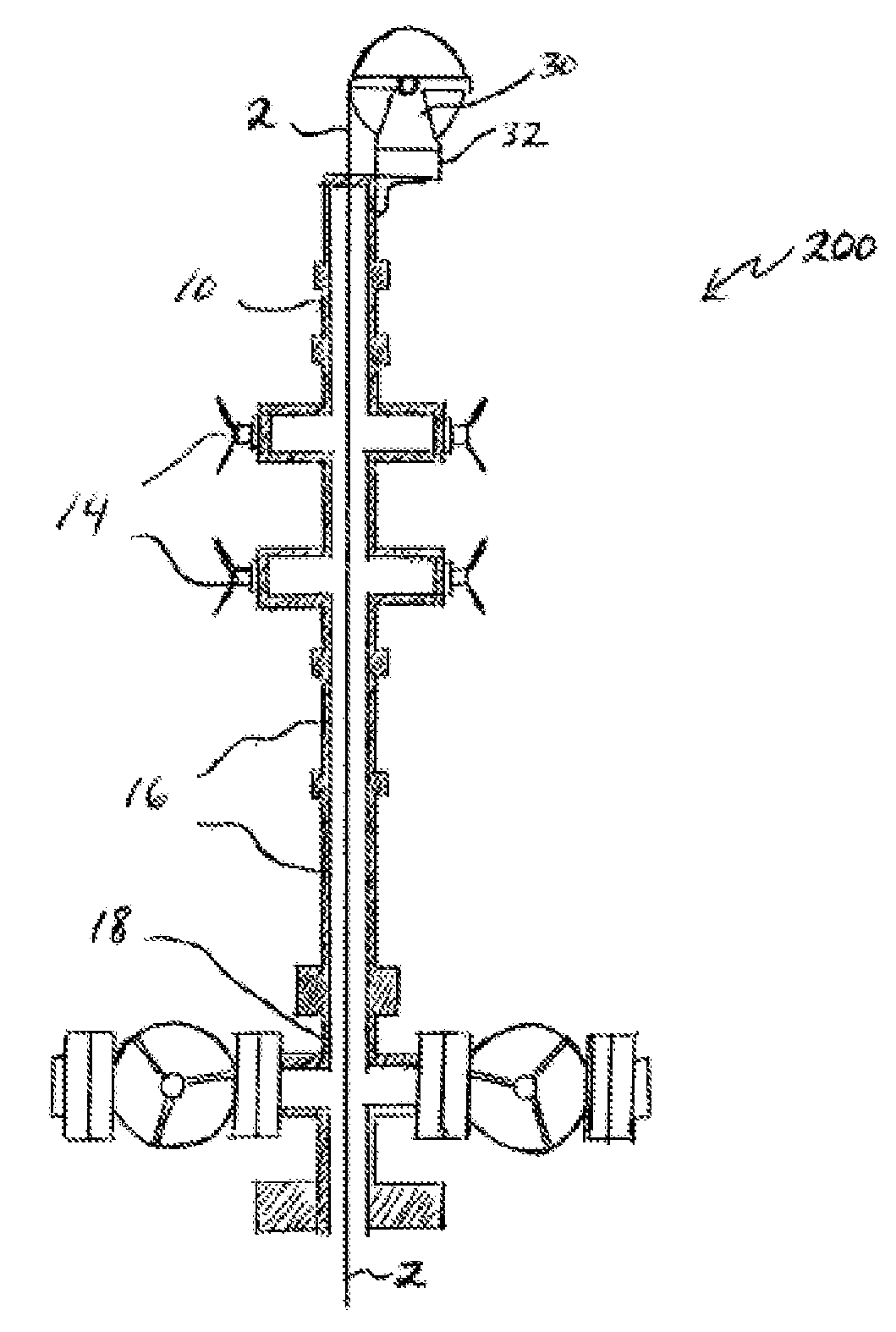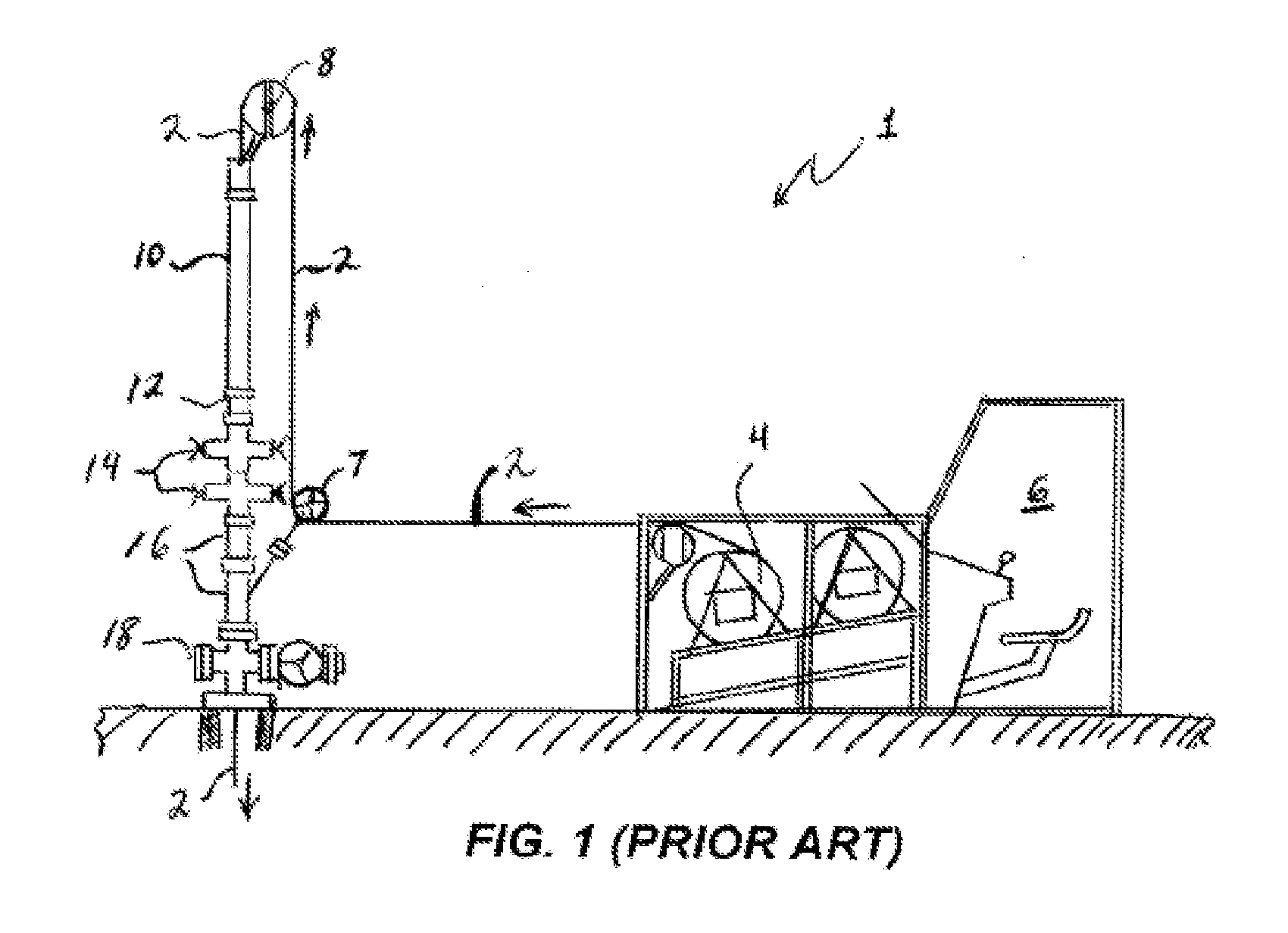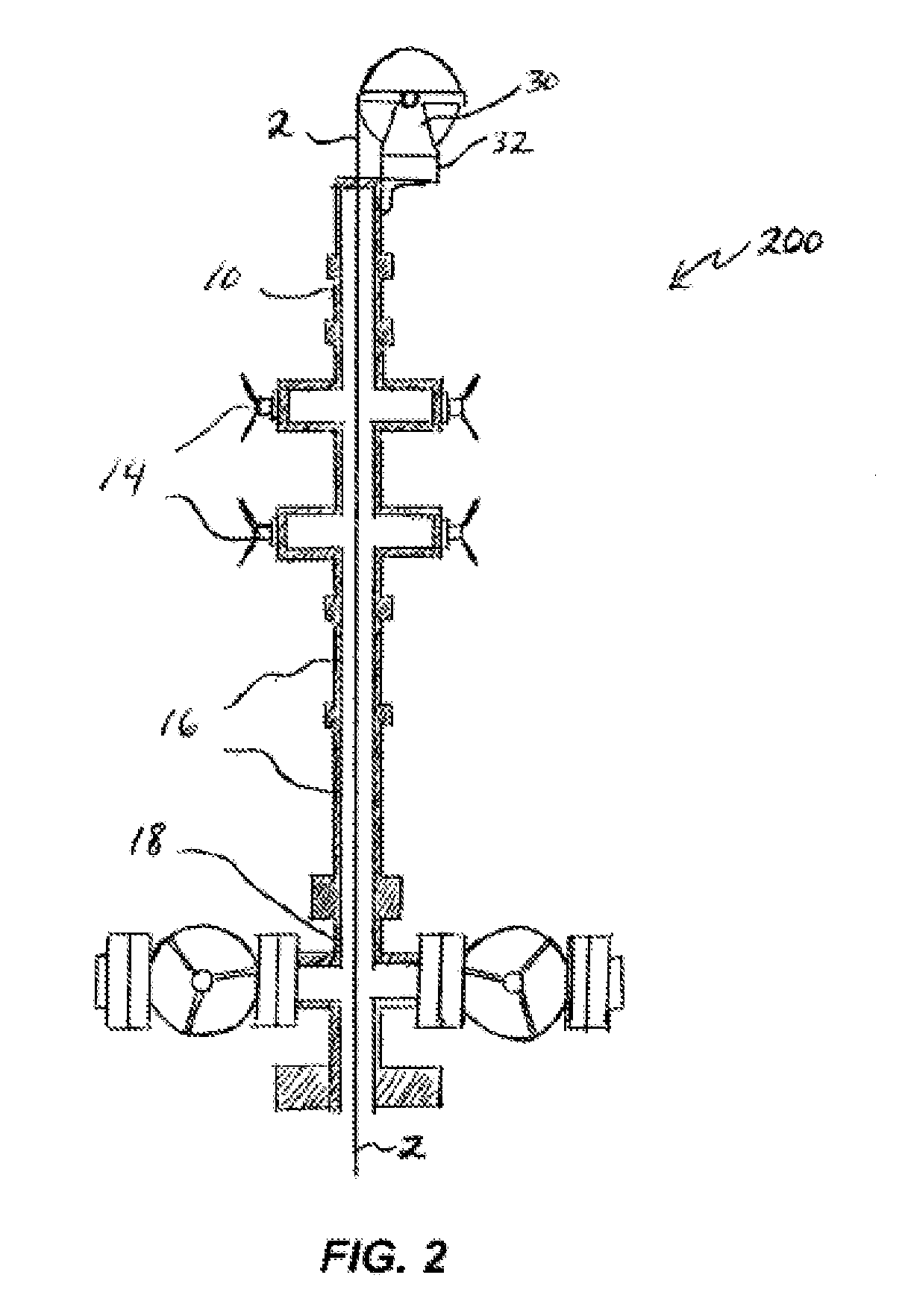Well servicing methods and systems
a technology for oil and gas wells and wells, applied in the direction of drilling casings, drilling pipes, borehole/well accessories, etc., can solve the problems of affecting the operation of monitoring operations, affecting the monitoring and job optimization, and affecting the flow of water
- Summary
- Abstract
- Description
- Claims
- Application Information
AI Technical Summary
Benefits of technology
Problems solved by technology
Method used
Image
Examples
embodiment 200
[0061]FIG. 2 is a schematic partial cross-sectional view of one embodiment, 200, of the invention. Communication line 2 is deployed from a communication line deployment reel 30 mounted directly via a bracket 32 onto stuffing box or lubricator 10. Alternatively, reel 30 could be mounted directly to the top-most BOP 14. This embodiment and its functional variations eliminate or greatly reduce bends in communication line 2 that may result in fatigue and ultimate failure of communication line 2. A drive mechanism (not shown) for reel 30 may be mounted directly on the well control stack, for example on lubricator 10, or it could be located on some other surface or platform. Data retrieved from the wellbore may be collected at the hub of the spool of reel 30. Embodiment 200 and its functional and structural equivalents may reduce rig up and rig down time, as well as require fewer pieces of equipment, and is less complex to implement compared to systems such as depicted in FIG. 1.
[0062]FIG...
embodiment 400
[0065]FIG. 4 is a schematic process information flow sheet of a method embodiment 400 that may be useful in understanding certain features of the invention. Box 60 represents a starting point for injection of a first treatment fluid, which may be a brine or other fluid. During this injection of brine, start unspooling the communication line with the first fluid, and obtain temperature and pressure data while unspooling the communication line, as illustrated at box 62. Once the communication line is at a first depth, data at that specific depth may be obtained, as depicted at box 64. Then a second treatment fluid may be injected, at box 66, moving the communication line to a new depth while obtaining pressure and temperature data during this second movement of the communication line. After reaching this second depth, a second set of temperature and pressure data may be obtained at this second depth, as illustrated at box 68. As a final step 70, a third treatment fluid might be inject...
PUM
 Login to View More
Login to View More Abstract
Description
Claims
Application Information
 Login to View More
Login to View More - R&D
- Intellectual Property
- Life Sciences
- Materials
- Tech Scout
- Unparalleled Data Quality
- Higher Quality Content
- 60% Fewer Hallucinations
Browse by: Latest US Patents, China's latest patents, Technical Efficacy Thesaurus, Application Domain, Technology Topic, Popular Technical Reports.
© 2025 PatSnap. All rights reserved.Legal|Privacy policy|Modern Slavery Act Transparency Statement|Sitemap|About US| Contact US: help@patsnap.com



